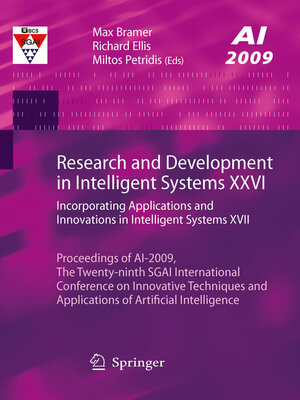Research and Development in Intelligent Systems XXVI
ebook ∣ Incorporating Applications and Innovations in Intelligent Systems XVII
By Richard Ellis

Sign up to save your library
With an OverDrive account, you can save your favorite libraries for at-a-glance information about availability. Find out more about OverDrive accounts.
Find this title in Libby, the library reading app by OverDrive.



Search for a digital library with this title
Title found at these libraries:
| Library Name | Distance |
|---|---|
| Loading... |
The most common document formalisation for text classi?cation is the vector space model founded on the bag of words/phrases representation. The main advantage of the vector space model is that it can readily be employed by classi?cation - gorithms. However, the bag of words/phrases representation is suited to capturing only word/phrase frequency; structural and semantic information is ignored. It has been established that structural information plays an important role in classi?cation accuracy [14]. An alternative to the bag of words/phrases representation is a graph based rep- sentation, which intuitively possesses much more expressive power. However, this representation introduces an additional level of complexity in that the calculation of the similarity between two graphs is signi?cantly more computationally expensive than between two vectors (see for example [16]). Some work (see for example [12]) has been done on hybrid representations to capture both structural elements (- ing the graph model) and signi?cant features using the vector model. However the computational resources required to process this hybrid model are still extensive.







